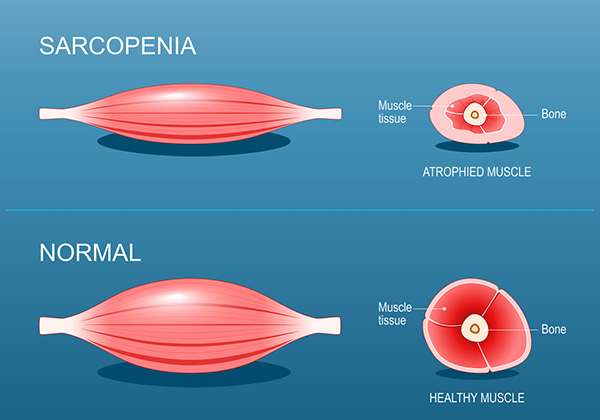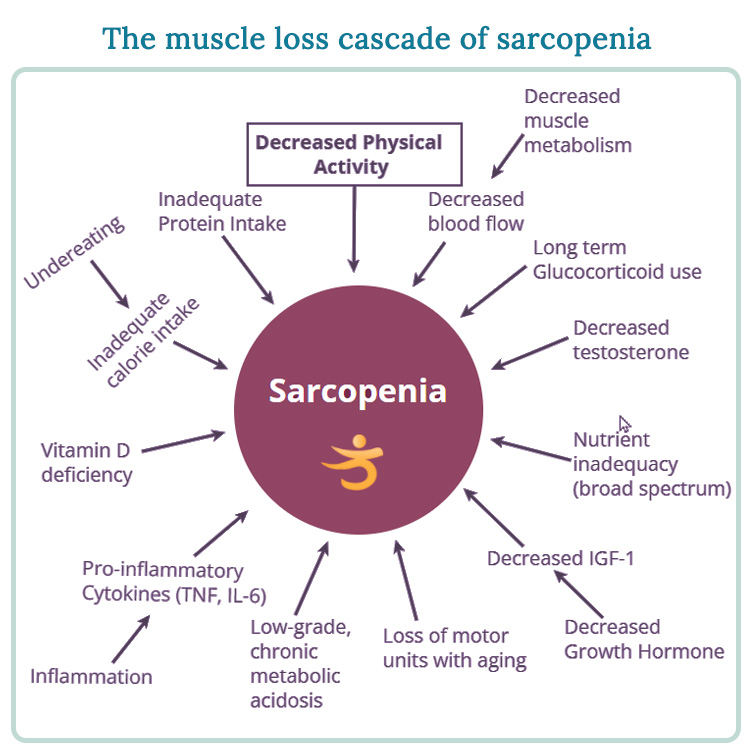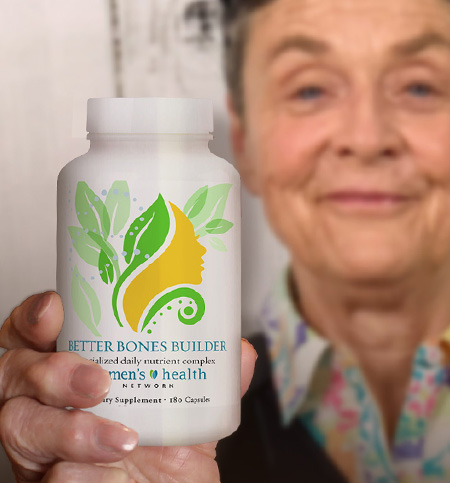Authored by Dr. Susan E. Brown, PhD
Have you noticed jars are harder to open, walking upstairs is more tiring and you can’t throw a baseball as far as you used to? These are signs of normal age-related muscle loss.
After age 30, most people lose as much as 3–8% muscle mass per decade. This loss accelerates around age 50 for both men and women. By age 80, most women have lost, on average, 50% of the strength in their back muscles. Men, on the other hand, have lost 64%. This normal rate of aging muscle loss is strikingly similar to normal aging bone loss, which can cost up to half of the peak bone mass.
And just as with bone, excessive loss of muscle mass and strength is not a normal aspect of aging. Excessive muscle wasting is a pathological disorder known as sarcopenia. The condition leads to physical disability, poor quality of life and even death.

The muscle loss cascade of sarcopenia
One 84-year-old woman came to me with substantial kyphosis (bending of the upper spine) and height loss. Yet when we looked at her bone density, she didn’t have any spinal fractures, which is the usual cause of kyphosis. Instead, she had extreme sarcopenia. It was her lack of muscle strength — not bone weakness — that disabled her to the extent that she could no longer rise from a bed or even a chair unaided. The flowchart below shows how this can happen.

The risk of disability is 1.5 to 4.6 times higher in older persons with sarcopenia than in older persons with normal muscle. Declining muscle mass is also associated with metabolic abnormalities, obesity, diabetes, hormone decline, reduced cognitive functioning and cardiovascular disease.
Are you at risk for sarcopenia?
Many factors contribute to the eventual development of sarcopenia manifested as an excessive loss of muscles mass, muscle strength and muscle function. Some authorities estimate that up to 30% of the US population over 60, and 50% of those over 80, could be classified as sarcopenic due to an excessive loss of muscle mass, strength and function. To identify sarcopenia, doctors often use a simple screening questionnaire.
How to maintain — and build — muscle as you age
While sarcopenia indicates an extreme of muscle loss, I bet most of us have experienced a lesser degree of declining muscle strength and wondered what to do about it. Indeed, just as with bone, there’s a great deal you can do to maintain and rebuild muscle as you age. And doing so is a great way to support your bone health too! Go here to learn some great exercises that build muscle and bone. Just like bone, our muscles were designed to last a lifetime — but we need to do our part too.









